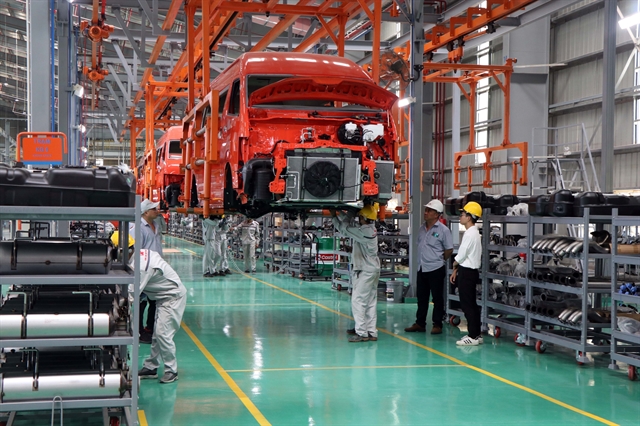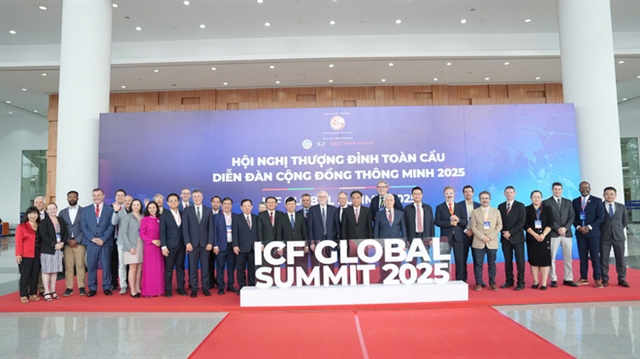 Society
Society

 |
| An assembly line at Kim Long Motor Hue Joint Stock Company in the central province of Thừa Thiên-Huế. A national programme has been proposed to help small and medium manufacturers become original brand manufacturers. — VNA/VNS Photo Đỗ Trưởng |
HÀ NỘI — The Ministry of Industry and Trade has submitted to the Prime Minister a proposal to help small and medium enterprises (SMEs) increase their value in global value chains.
The proposal aims to develop a national-level programme that will improve policies to help SMEs transition to higher value-added segments in the global chains.
Under the programme, SMEs will get support to enhance their production capabilities and connect with domestic suppliers and direct exporters.
The programme will map out specific steps that will transform Vietnamese SMEs from processing and assembly companies to original equipment manufacturers (OEM) and original brand manufacturers (OBM), who can assert their positions in the international market.
According to the ministry, despite initial successful integration, Vietnamese enterprises are positioned among the lowest segments of the global value chains. The share of added value in the country’s total export value decreased across all sectors, dropping from 69 per cent in 2000 to 52 per cent in 2020, which was a downward trend that was not observed in any other countries with the same level of development.
Moreover, enterprises operating in Việt Nam rely heavily on imports to participate in global value chains and the country primarily serves as a site for processing and assembling final products for export to end markets such as the US, the EU, and Japan.
The scale and proportion of exports based on processing and assembly from imported goods have surged, increasing from US$3 billion in 2000 (21.44 per cent of total exports) to $171.5 billion in 2022 (48.01 per cent).
These are higher than most competitors including China (13.51 per cent in 2022), Thailand (28.96 per cent), Singapore (34.25 per cent) and Malaysia (26.38 per cent), who have all seen a continuous decline in these figures over the years.
Meanwhile, the production capacity of Vietnamese enterprises, particularly in the processing and manufacturing industry, has not been improved fast enough, which reduces the effectiveness of their participation in global value chains.
The industrial sector exhibits the lowest labour productivity growth among economic sectors, with few technological innovations and 28.54 per cent of workers lacking technical qualifications.
Low-tech industries continue to hold a high proportion of approximately 65-70 per cent in the processing and manufacturing sector in Việt Nam, compared to only 18 per cent globally. — VNS




